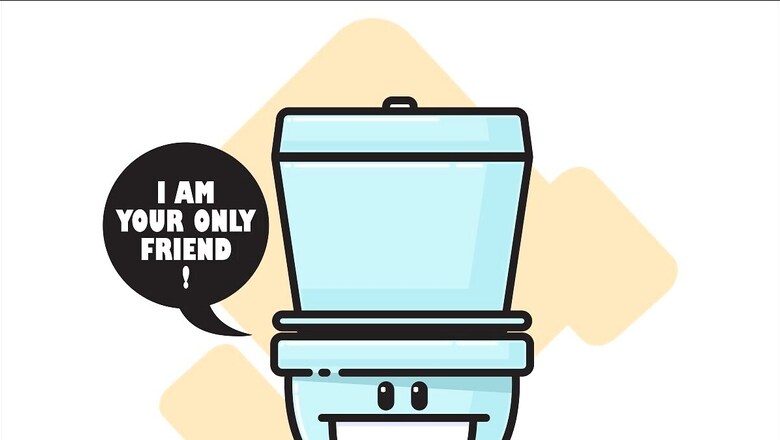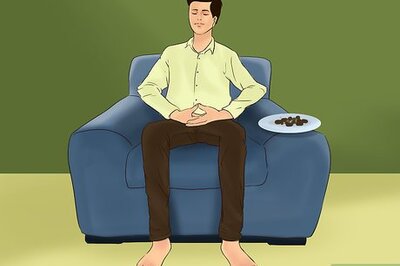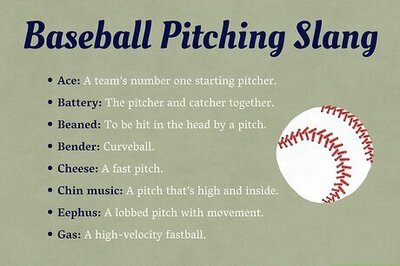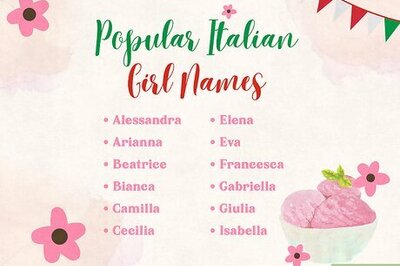
views
Good hygiene is a life skill that children need to learn as they grow up. Perhaps the most important within that set of life skills is toilet hygiene. Not only does it help them maintain good personal hygiene, but it also helps them respect the privacy of others, and avoid embarrassing situations.
However, teaching toilet etiquette can be challenging for parents and caregivers, especially if the child is reluctant or resistant to follow the rules. How can we make toilet etiquette fun and educational for children? Here are some creative and enjoyable ways to teach children about toilet etiquette through interactive games and activities, making the learning process engaging and effective.
How can you use games and play to teach toilet etiquette?
By using play as a learning tool, you can make the teaching process engaging and positive for both you and your children. Children learn best when they are having fun. Games and play can stimulate their curiosity, creativity, and motivation. They can also help them:
- Remember and apply what they learn
- Practice and improve their skills
- Express their feelings and opinions
- Cooperate and communicate with others
- Enjoy the learning process
By incorporating games and play into the teaching of toilet etiquette, you can create positive associations with good toilet habits.
Here are some great examples of games you can play with your child. Some of these are best played in larger groups, so are also very well suited for teachers to play with their students.
Etiquette Bingo
This game is a fun way to teach your children about different toilet etiquette behaviours. You will need:
- A bingo card for each child (you can make your own or print one online)
- A set of cards with different toilet etiquette behaviours on them (e.g., “Close the lid”, “Knock before entering”, “Use a tissue”, etc.)
- A bowl or a hat
- A marker or a sticker for each child
How to play:
- Give each child a bingo card and a marker or a sticker.
- Shuffle the cards with the toilet etiquette behaviours and put them in a bowl or a hat.
- Draw one card at a time and read it aloud.
- Ask the children to check if they have the same behaviour on their bingo card. If they do, they can mark it with their marker or sticker.
- The first child who gets five behaviours in a row (horizontally, vertically, or diagonally) wins the game.
- Review the behaviours with the children and explain why they are important for toilet etiquette.
Design Your Dream Bathroom
This activity is a fun way to encourage creativity while discussing the essentials of a clean and organised bathroom. You will need:
- A large sheet of paper for each child
- Crayons, markers, stickers, or other materials for decorating
- Magazines, newspapers, or catalogues with pictures of bathrooms or bathroom items
What to do:
- Give each child a large sheet of paper and some materials for decorating.
- Ask them to design their dream bathroom on the paper, using their imagination and creativity.
- Encourage them to include hygiene elements in their design, such as soap, towels, toothbrushes, etc.
- When they are done, ask them to present their dream bathroom to the rest of the group.
- Discuss with them what makes a bathroom clean and pleasant, and how they can keep it that way.
Role-Playing Scenarios
This activity is a fun way to let your children act out appropriate responses and behaviours for various real-life scenarios related to toilet etiquette. You will need:
- A list of scenarios related to toilet etiquette (e.g., “You need to use the toilet at a friend’s house”, “You see someone leaving the bathroom without washing their hands”, “You spill something on the floor”, etc.)
- Props or costumes (optional)
What to do:
- Divide the children into pairs or small groups.
- Give each pair or group a scenario related to toilet etiquette and ask them to prepare a short role-play based on it.
- Let them use props or costumes if they want to make it more realistic and fun.
- Ask each pair or group to perform their role-play in front of the rest of the group.
- After each role-play, have a guided discussion with the children about what they did well, what they could improve, and what they learned from the scenario.
Need more help? Interactive Resources and Apps to the Rescue!
There are a number of apps and online resources parents can use.
Potty Time with Elmo: This app features Elmo and his friends as they teach young children about using the potty, washing their hands, and more. It includes songs, stories, games, and stickers.
Daniel Tiger’s Stop & Go Potty: This app features Daniel Tiger and his friends as they help children practice stopping their play when they have to go potty and learn about their important bathroom routines at the potty and sink. The app helps children practise bathroom routines like wiping, flushing, and washing & drying hands before returning to play.
Baby’s Potty Training – Toilet : This app features a cute baby character that needs your help with using the potty. You can choose from different potties, toilets, and accessories, and teach the baby how to use them properly.
Developing a Culture of Good Toilet Habits
Keeping toilets clean is a shared responsibility – all it takes is one messy person, and an entire school full of children has to deal with a dirty toilet. The good news is that children are like sponges when young, and whatever habits they learn now become second nature. This is why Harpic and News18’s Mission Swachhta aur Paani has designed several outreach programs aimed at children.
Under the aegis of Mission Swachhta aur Paani, Harpic partnered with Sesame Workshop India, an educational non-profit working for the early developmental needs of young children, to promote positive sanitation, hygiene knowledge and behaviours among children and families through schools and communities, engaging with 17.5 million children across India. Mission Swachhta aur Paani has also pioneered a program that champions healthy toilet and bathroom habits in young children, recognising and celebrating “Swachhta Champions” in schools across the country.
As a parent, Mission Swachhta aur Paani empowers you to have the right conversations at your child’s school. If there is a toilet and hygiene related topic you want to talk to your school about, you’ll find the resources you’ll need here.




















Comments
0 comment